Art World
10 Things That Will Surprise You About Renaissance Master Sandro Botticelli
Botticelli is said to have burned some of his pagan work at the infamous Bonfire of the Vanities.
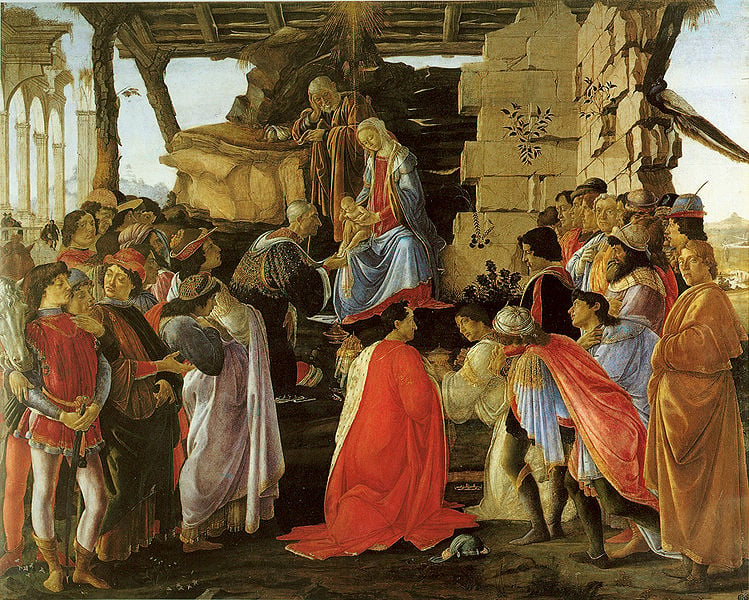
Botticelli is said to have burned some of his pagan work at the infamous Bonfire of the Vanities.

An exhibition of the work of Sandro Botticelli (circa 1445–1510) is planned to open at the Muscarelle Museum of Art in Virginia on February 11. The show, “Botticelli and the Search for the Divine: Florentine Painting Between the Medici and the Bonfire of the Vanities,” which will travel to the Museum of Fine Arts, Boston in April, will bring Botticelli’s famed Venus to the US for the first time. In homage to the Renaissance master, we take a closer look at his life and career.
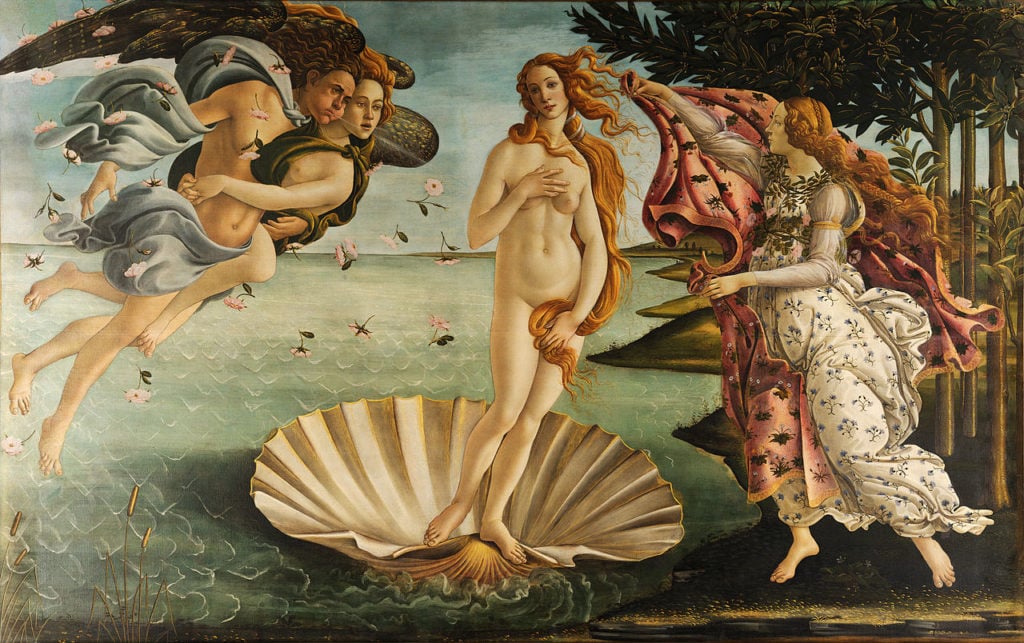
Sandro Botticelli, The Birth of Venus(circa 1486). Courtesy of the Uffizi Gallery, Florence.
1. His real name wasn’t Sandro
Botticelli’s real name was a mouthful: Alessandro di Mariano di Vanni Filipepi. So, it’s no wonder that the artist’s monniker was shortened to Sandro. “Botticelli,” meanwhile, was a nickname that meant “little barrel.” According to PBS, it originally came from the painter’s brother. It obviously stuck.
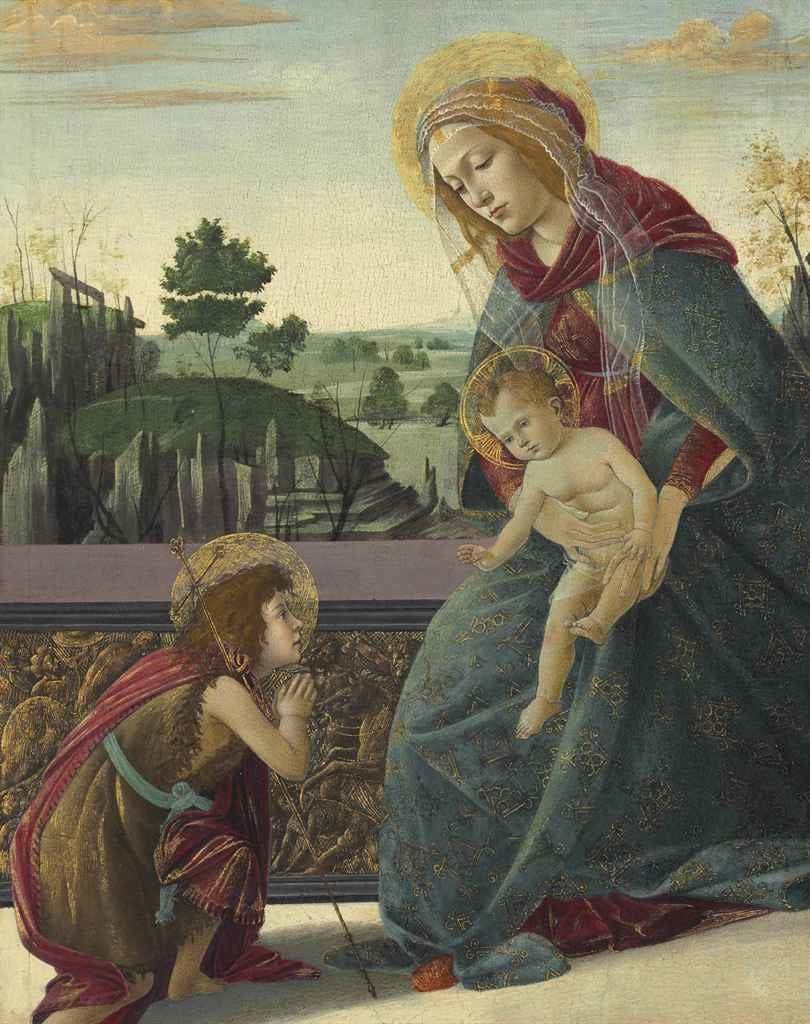
Sandro Botticelli, The Rockefeller Madonna: Madonna and Child with Young Saint John the Baptist. Courtesy of Christie’s New York.
2. His auction record tops $10 million
As recorded by the artnet Price Database, Madonna and Child With the Young Saint John the Baptist, set a new record for Botticelli in January 2013 when it sold for $10.4 million at Chistie’s New York. The so-called “Rockefeller Madonna” was acquired by John D. Rockefeller III in 1925, and stayed in the family for 50 years before passing through the hands of several private collectors.
An anonymous buyer snatched up the piece after three minutes of furious phone bidding, according to the Wall Street Journal. Prior to the sale, Christie’s sent the painting on a world tour, with stops in London, Moscow, and Hong Kong. To drum up enthusiasm for the work among Asian buyers, who rarely buy Christian-themed art, the auction house even held a seven-course Chinese banquet with senior auction house staff.
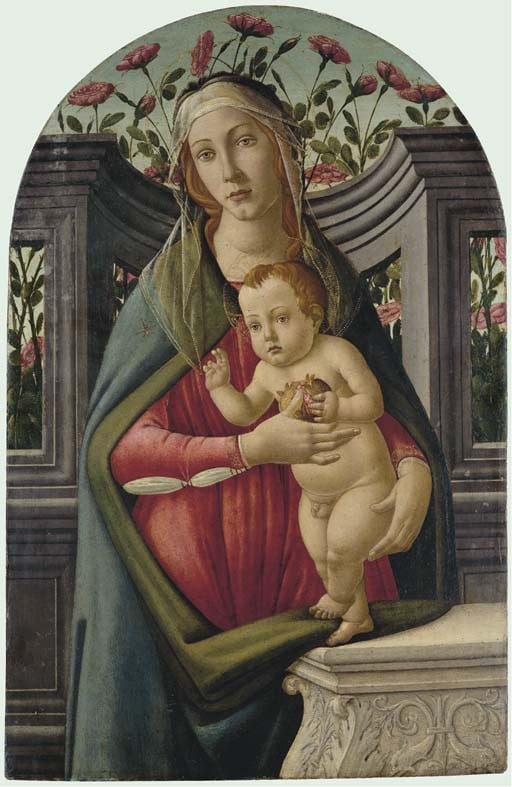
Sandro Botticelli, The Madonna and Child, with a pomegranate, in an alcove with roses behind. Courtesy of Christie’s London.
3. Botticelli loved a good Madonna and Child
“Although he is perhaps best known for his pagan works, The Birth of Venus and the Primavera, [Botticelli] during his career executed a number of extremely tender devotional works,” said Nichola H.J. Hall, Christie’s international co-chairman for Old Master paintings in a video for the auction house.
Of the artist’s top 20 lots sold at auction, no less than 14 of them are paintings of the Madonna and Child, including his two most expensive works of all time. The Madonna and Child, with a pomegranate, in an alcove with roses behind sold for £3.8 million ($7.5 million) at Christie’s London in December 2006 (a record at the time).
The piece is believed to be a reworking of the famed San Barnaba altarpiece a the Uffizi in Florence, and at least three variants of the work belong to American museums: the Fogg Art Museum in Cambridge, Massachusetts; the Yale University Art Gallery in New Haven, Connecticut; and New York’s Metropolitan Museum of Art.
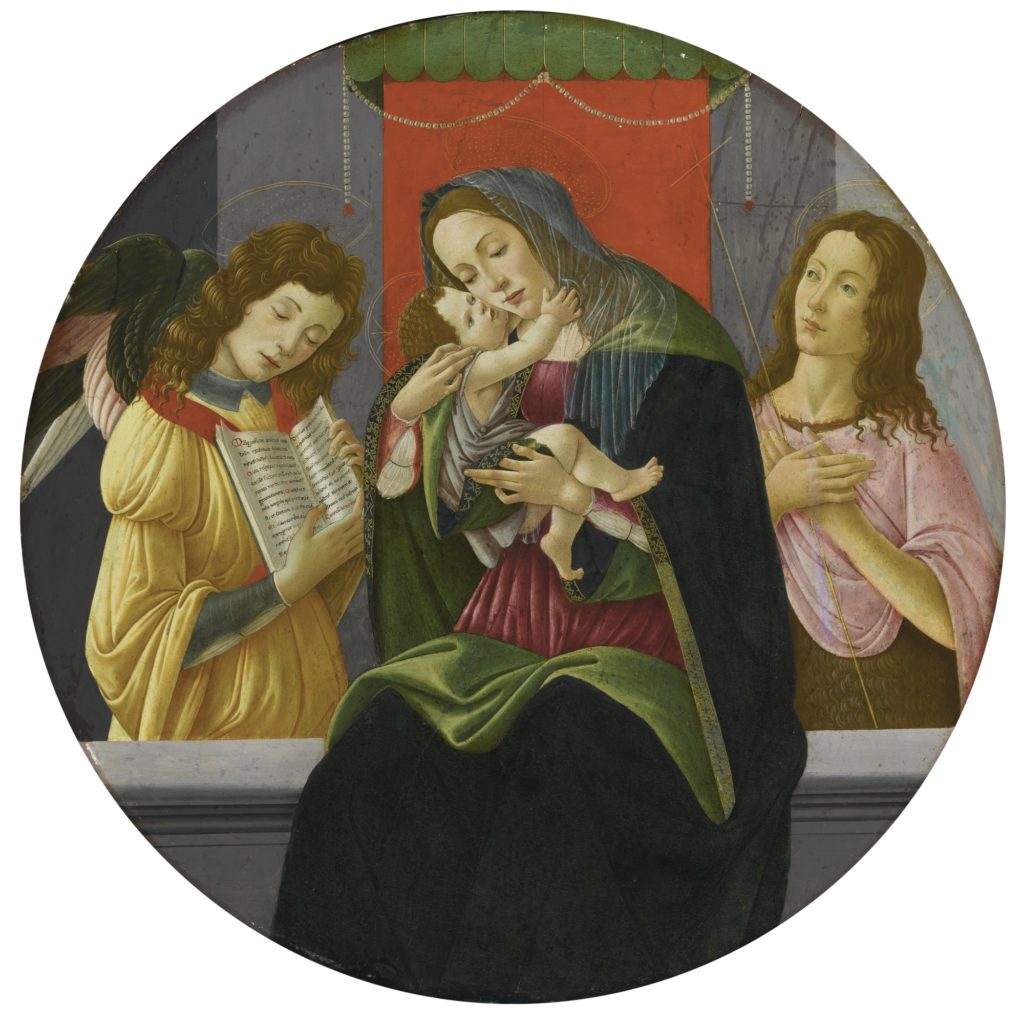
Sandro Botticelli and studio, The Madonna and Child Enthroned With Saint John the Baptist and an Angel (circa 1510–15). Courtesy of Sotheby’s New York.
4. Botticelli’s work comes up at auction more often than you might think
If you’re hitting up the Old Master sales at the major auction houses, it’s not unheard of to find a work or two by Botticelli, or his workshop, on offer. Just this week, for instance, Sotheby’s New York sold two Madonna and Child tondo paintings on January 25. The Renaissance great can also be less expensive than you might think—both works, created in collaboration with the artist’s workshop, brought in just $792,500.
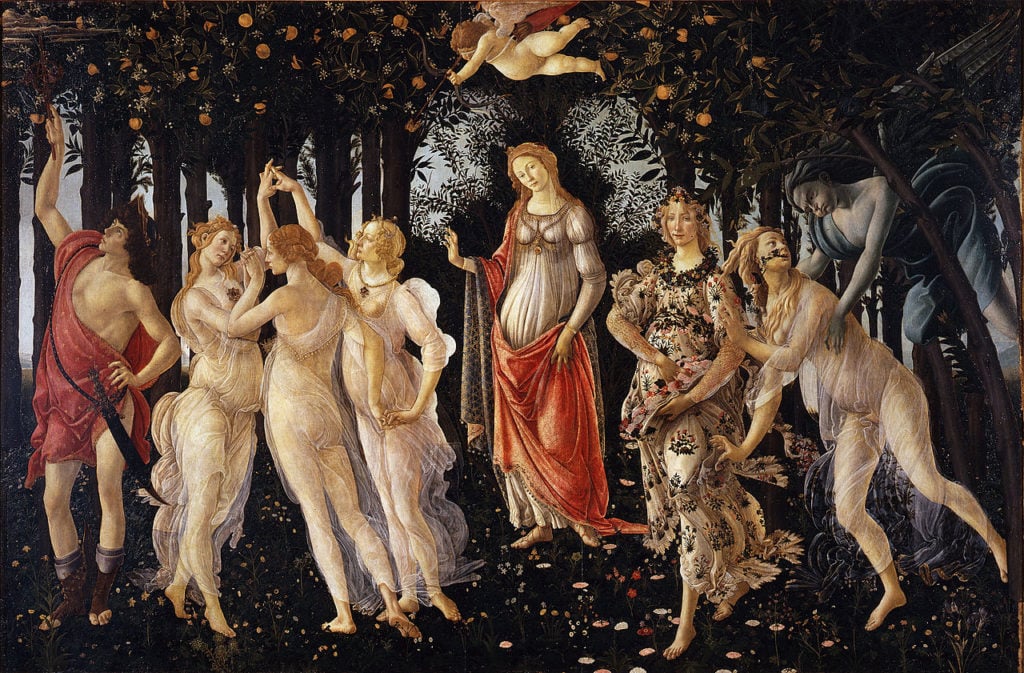
Sandro Botticelli, Primavera(circa 1482). Courtesy of the Uffizi Gallery, Florence.
5. You can see both of his most important paintings in one room
If there’s one place that Botticelli fans need to visit, it’s the Uffizi Gallery in Florence, which counts the artist’s famed canvases Primavera and The Birth of Venus among its most popular works. The museum also houses the artist’s 1475 canvas Adoration of the Magi.
Though Venus is coming to America, the forthcoming exhibition will not feature the Uffizi masterpiece but a smaller work featuring the goddess alone.
While considered a masterpiece today, The Birth of Venus wasn’t always so well-received according to PBS: “Designed to be hung above the marital bed, it was a daring celebration of human desire. The painting was so controversial it was kept behind closed doors for half a century.”
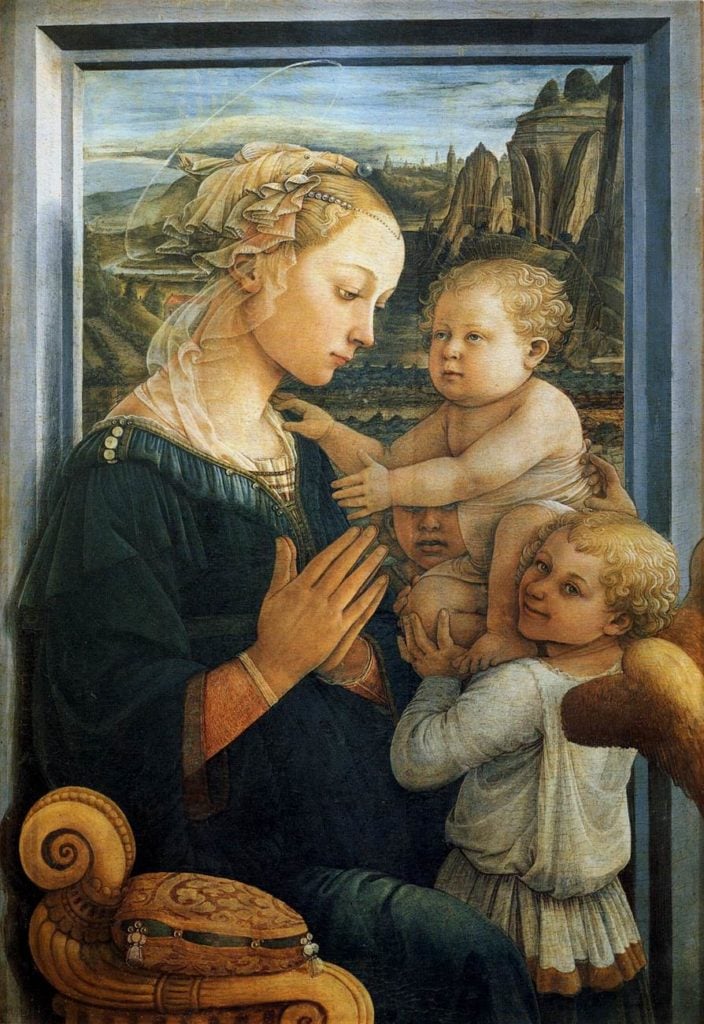
Fra Filippo Lippi, Madonna With Child and Two Angels. Courtesy of the Uffizi Gallery.
6. Botticelli studied under the great Fra Filippo Lippi
When Botticelli turned, at the relatively mature age of 18, to painting, it was noted Italian monk and painter Fra Filippo Lippi who served as his teacher. According to Encyclopedia Britannica, “Lippi’s painterly style, which was formed in the early Florentine Renaissance, was fundamental to Botticelli’s own artistic formation, and his influence is evident even in his pupil’s late works.”
In turn, Botticelli later taught Filippino Lippi, Lippi’s son—conceived, according to art historian Giorgio Vasari, after the monk seduced a young woman named Lucrezia Buit, likely a novice at a convent, while she was ostensibly posing as the Madonna for a painting for their chapel—following his mentor’s death.
The upcoming American exhibition will present paintings by both Lippis along with the 16 works by Botticelli.
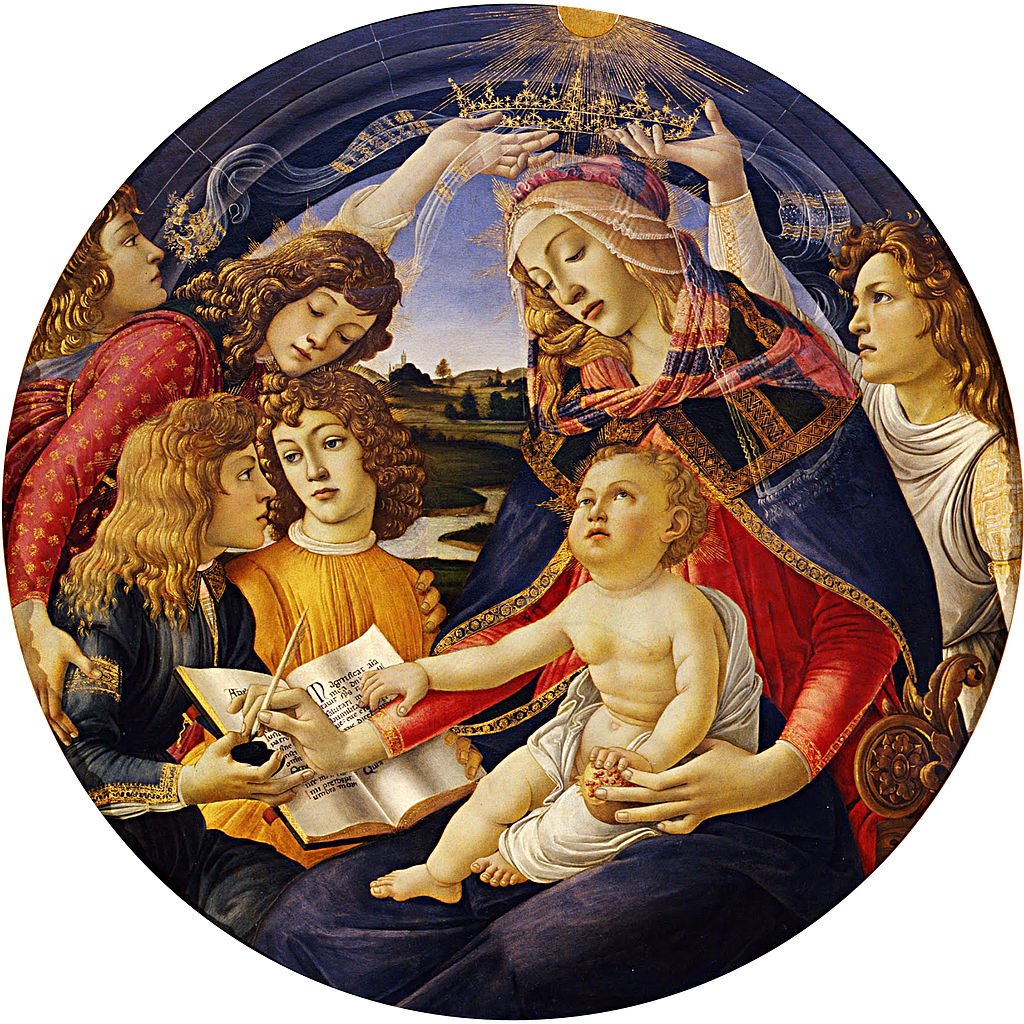
Sandro Botticelli, Madonna del Magnificat (circa 1483). Courtesy of the Uffizi Gallery.
7. Lorenzo “the Magificent” de Medici was his biggest fan
Like Leonardo da Vinci, Botticelli was among the artists at the Florentine court of Lorenzo de Medici, an important patron of the arts during the Renaissance. As a teenager, Botticelli was “offered his own studio space inside the Medici Palace,” wrote PBS, where “he quickly befriended the charismatic heir to the dynasty, Lorenzo.
According to Vasari, the artist painted the now-iconic The Birth of Venus for the Renaissance ruler’s villa. Members of the Medici family feature prominently in two Botticelli paintings: The Adoration of the Magi, where Lorenzo appears with his horse, and Madonna of the Magnificat, featuring Lorenzo’s mother as Mary, holding the baby Jesus and surrounded by her own children.

A relief sculpture of Bernardino of Siena organizing the vanities bonfire. The sculpture is in Perugia, on the Oratorio di San Bernardino, by Agostino di Duccio, built between 1457 and 1461. Courtesy of Giovanni Dall’Orto, via Wikimedia Commons.
8. Botticelli might have destroyed some of his art
Despite Botticelli’s close relationship with Lorenzo, he was also a follower of the Medici patriarch’s archenemy, the Dominican priest Girolamo Savonarola, who advocated for Christian renewal and the destruction of secular art and cultural artifacts.
Vasari wrote of Botticelli that “he was so ardent a partisan [of Savonarola] that he was thereby induced to desert his painting, and, having no income to live on, fell into very great distress.”
On February 7, 1497, Savonarola held the infamous bonfire of the vanities, at which supposedly sinful objects including artworks and books were destroyed. The truth is lost to history, but it has been said that Botticelli was compelled to burn his mythological paintings at the priest’s behest.
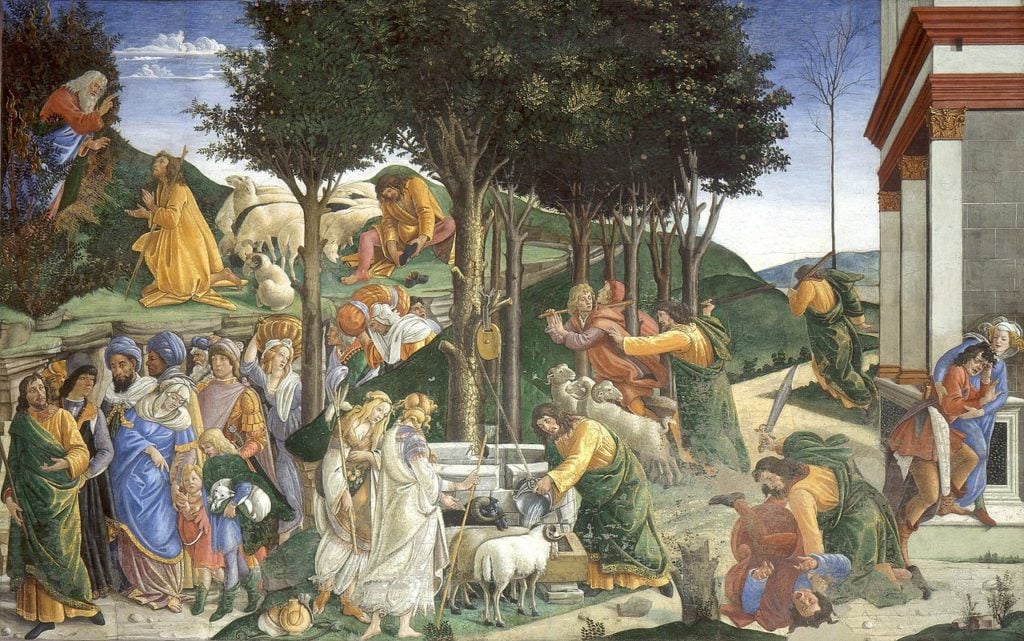
Sandro Botticelli, Trials of Moses. Courtesy of the Vatican Museums.
9. Botticelli painted parts of the Sistine Chapel
The Sistine Chapel is synonymous with Michelangelo, who famously painted its ceiling. What many people don’t realize is that many other artists contributed their artwork to the richly-decorated room. For his part, Botticelli painted one of the “Stories of Jesus,” titled Temptation of Christ, for the chapel’s northern wall, and The Trials of Moses and Punishment of the Rebels for the “Stories of Moses” on the southern wall.

Piero di Cosimo, Portrait of a woman, said to be of Simonetta Vespucci (circa 1490). Courtesy of Musée Condé, Chantilly, France/the Google Art Project/Wikimedia Commons.
10. The purported love of Botticelli’s life was married to someone else
Botticelli is said to have been in love with Simonetta Vespucci, wife of Marco Vespucci. Although she died in 1476, at about age 22, she is said to have been the model for Venus and several other female figures in The Birth of Venus and Primavera. Adding credence to the rumor, Botticelli asked to be buried at her feet in Florence’s Church of Ognissanti.